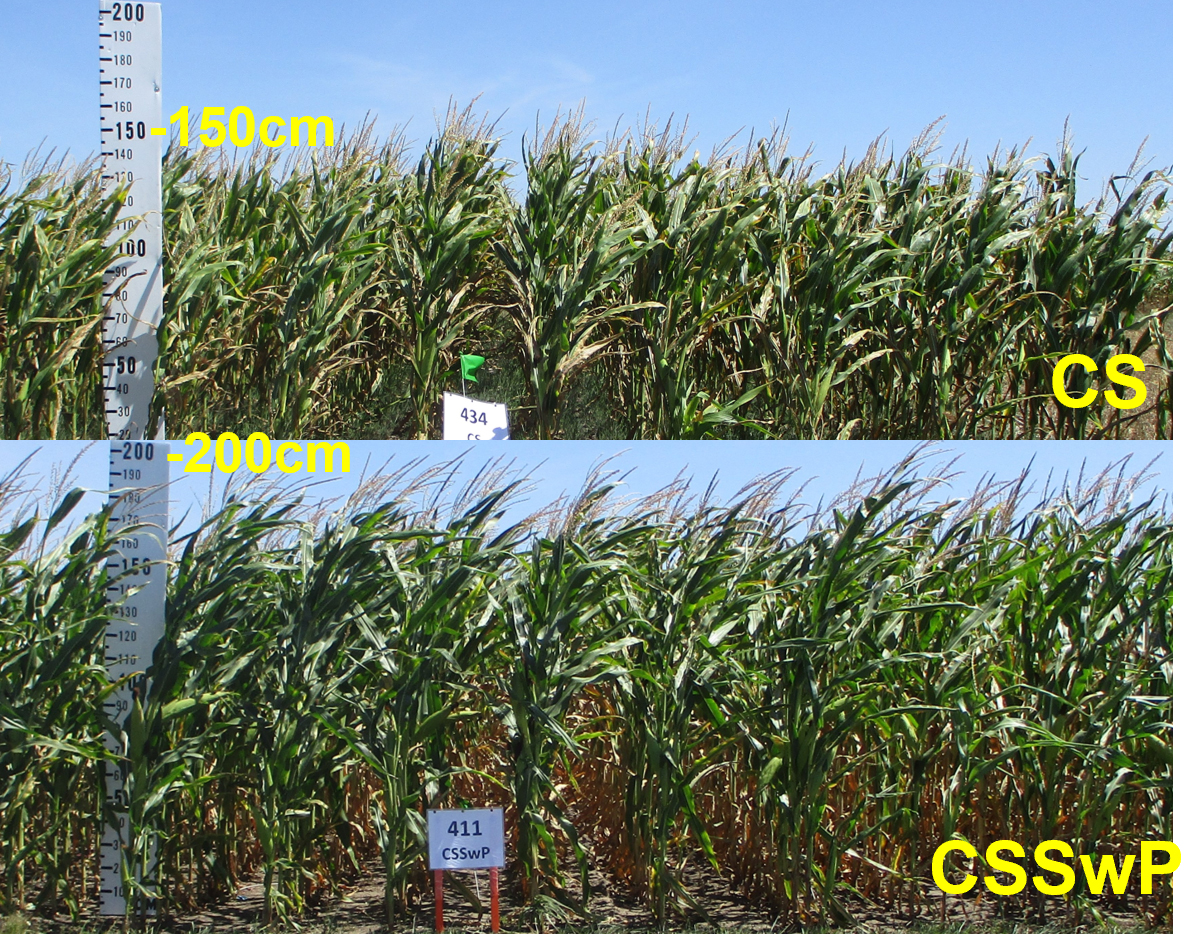
USDA-ARS researchers found that corn plants grown in a four-year rotation following field peas have an increased plant height of 78 inches (200 cm) at 105 days after planting compared to 59 inches (150 cm) for corn grown in a two-year rotation following soybeans, leading to increased yields in the corn-soybeans-spring wheat-peas rotation. USDA-ARS graphic.
By Stan Wise
PIERRE, SD – It can take time for scientists to build new knowledge of biological processes, especially when those processes play out over the course of years.
Researchers with the U.S. Department of Agriculture-Agricultural Research Service North Central Agricultural Research Laboratory near Brookings, South Dakota, have put in that time – decades, in fact. Thanks to their work, farmers now have more reliable information to use when designing their crop rotations.
The ongoing Alternative Rotation Experiment has been running at the Eastern South Dakota Soil and Water Research Farm since 2000.
“We are evaluating multiple four-year crop rotations and comparing them to a two-year corn-soybean rotation,” USDA-ARS Research Agronomist Shannon Osborne said. She said that the four-year rotations include combinations of corn, soybeans, spring wheat, winter wheat, oats, field peas, and sunflowers. All the plots are managed with no-till practices.
This experiment has produced some eye-opening data indicating that diverse crop rotations have several advantages over a common two-year corn and soybean rotation.
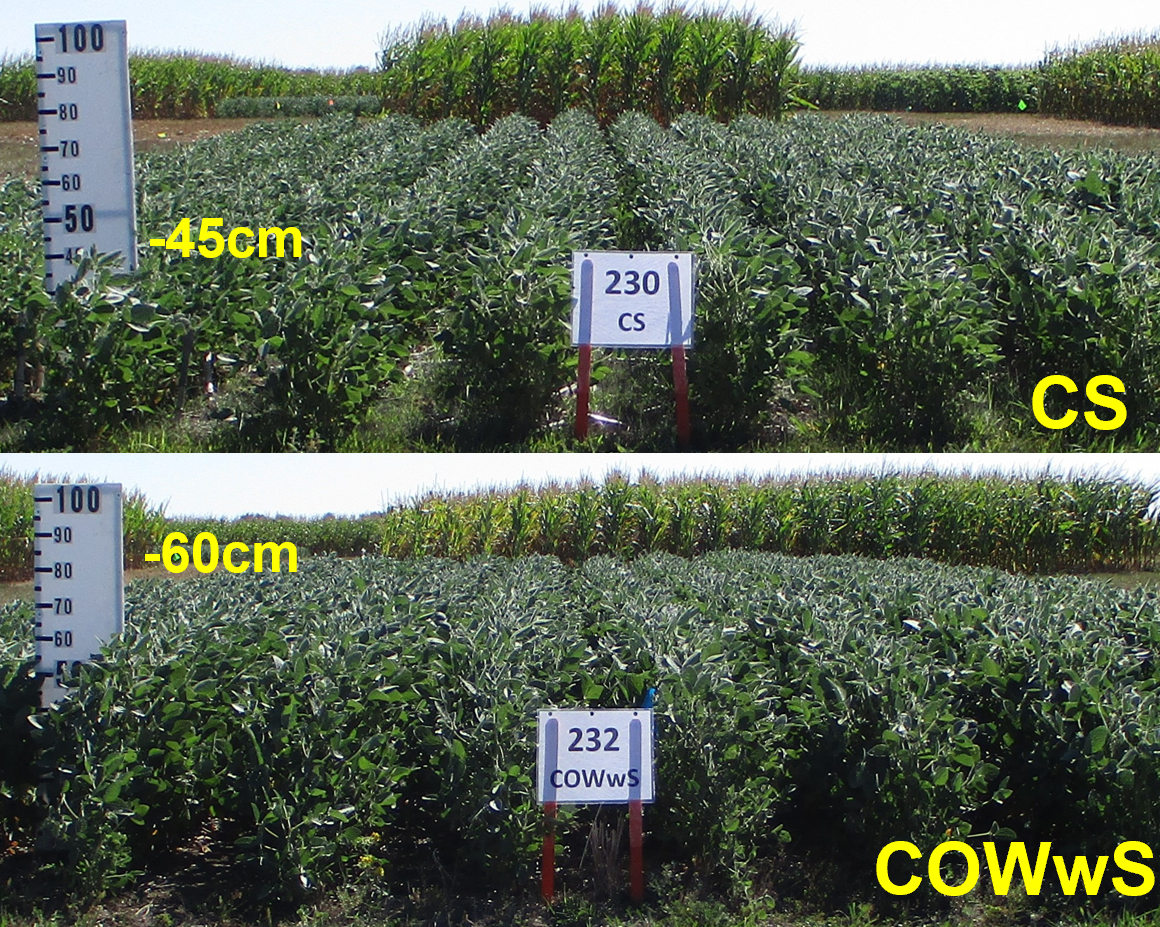
USDA-ARS researchers found that soybeans grown in a four-year rotation following winter wheat have a higher crop height of 24 inches (60 cm) at 86 days after planting compared to 18 inches (45 cm) for soybeans in a two-year rotation, leading to increased soybean yields in the corn-oats-winter wheat-soybeans rotation. USDA-ARS graphic.
Increased corn and soybean yields
“As we’ve gone through, we initially started seeing improvements in soybean yields,” Osborne said. “So, we saw those probably after about five or six years where we would have improved soybean yields up to about 25% when soybeans are grown in a rotation following a small grain crop compared to following corn.”
Over time, researchers also began to see increased corn yields when it is grown in rotations with other crops. “After we’ve been in that rotation for at least 12 years to 16 years, we’re seeing improved corn yields when corn is grown in a rotation with winter wheat and peas, especially when corn is going in right after that pea crop,” Osborne said.
Decreased risk
Having more than 20 years of data allows researchers to draw conclusions that would be unfeasible in shorter term experiments. One of those conclusions, Osborne said, is that four-year rotations can be as productive – in terms of total yield for all crops within the rotation – as a corn-soybean rotation while being less susceptible to weather extremes.
“That four-year rotation is less environmentally risky,” Osborne said. “It’s just as productive, but it’s a lot more stable to changes in environmental conditions, which is kind of what we’re seeing the last few years. We have these ups and downs in weather and temperature and rainfall.”
USDA-ARS researchers also worked with economists at South Dakota State University to evaluate the economics of the different rotations, including crop prices and production costs. They determined that some four-year rotations have a higher benefit-cost ratio. Osborne said this occurred due to lowered input costs for rotations that include two legumes, which add nitrogen to the soil.
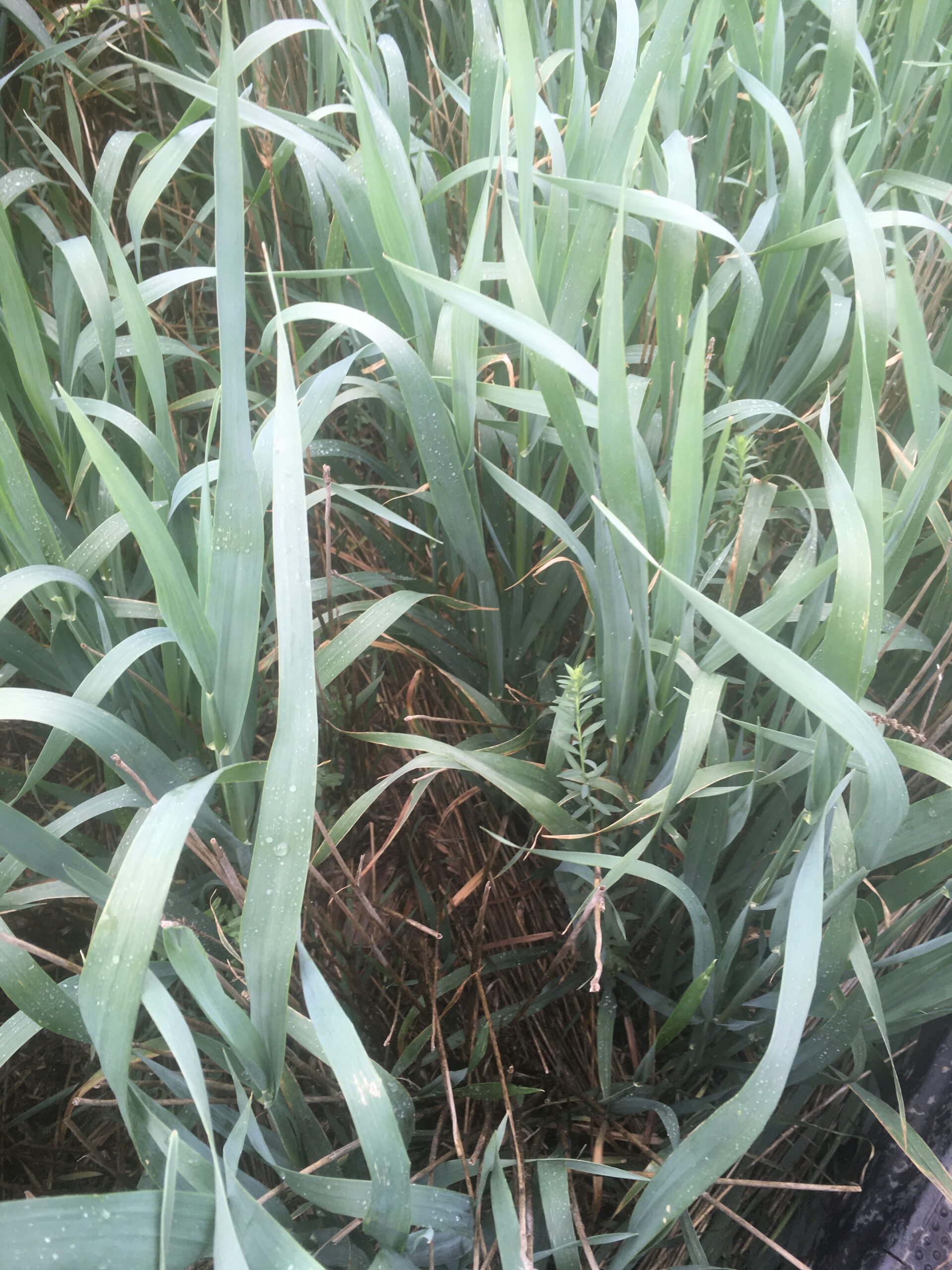
Marvin Schumacher planted this cover crop of mostly oats, flax, and lentils into a field of spring wheat stubble. Schumacher includes cover crops as part of his diverse crop rotation. Courtesy photo.
Improved soil biological activity and reduced erosion
“We’re seeing when we have a diversified rotation versus a two-year rotation, we have an increase in short term carbon mineralization,” Osborne said. “So that’s indicative of more microbial activity, more things happening in that soil being more active in that four-year rotation compared to the two-year corn-soybean rotation.”
The increased biological activity leads to healthier, more stable soil that offers more efficient nutrient cycling and reduced erosion.
Osborne said that in the four-year rotations, “you get more soils that are in larger aggregates, or more stable aggregates that are less susceptible to wind erosion.” In the two-year corn and soybean rotations, she said “those aggregates are less stable, and they are more highly erodible, leading to them being more susceptible to wind and water erosion.”
Other benefits
Osborne said that diverse rotations have shown other benefits.
“We have found in these diverse rotations, we have more carbon build up, more soil organic matter being built up,” she said. Increased soil organic matter is associated with increased water infiltration and storage capacity, which helps crops be more resilient during droughts.
Osborne said the soils in the diverse rotations are also showing decreased greenhouse gas emissions, increased mycorrhizal fungi, and improved plant disease resistance.
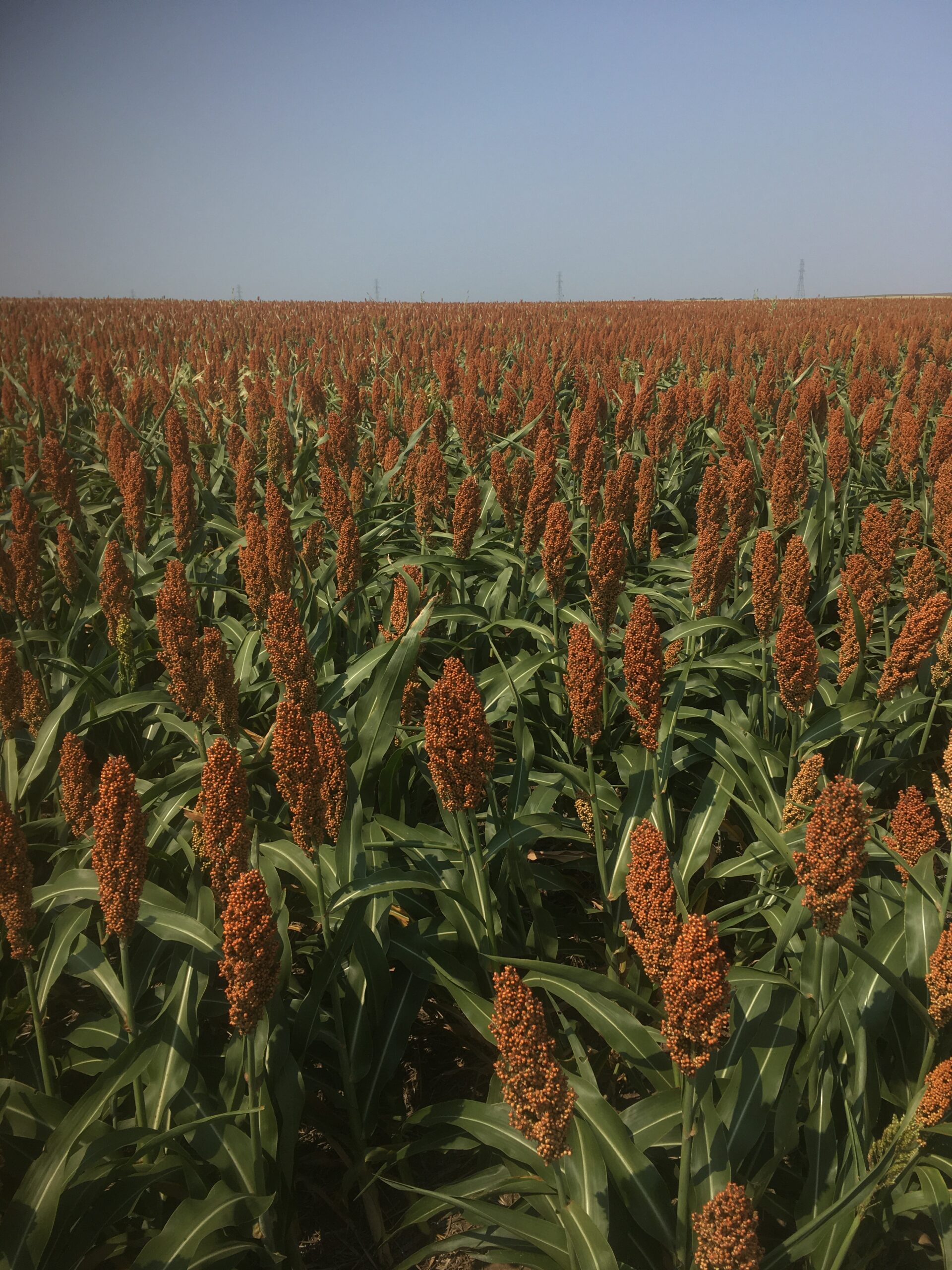
Marvin Schumacher includes milo as part of his diverse crop rotation which is designed to increase soil organic matter. Increased soil organic matter is associated with higher water infiltration rates and storage capacities. Courtesy photo.
Putting it in practice
Marvin Schumacher, who farms about 15 miles north of Pierre, knows the benefits of diverse rotations. His operation has used no-till practices since the mid-1990s, and he grows oats, spring wheat, winter wheat, corn, milo, sunflowers, peas, millet, and cover crops.
“We’ve got different rotations based on what we’re doing. The dryland, we will run oats, followed by winter wheat, and then we do corn, and on some of it we’ll follow up with a milo. And then we’ll do a broadleaf, either a sunflower or a pea or soybean,” Schumacher said. “On the irrigated, we’ve kind of been changing things around a little bit, but right now we run two corns, and then we’ll follow it with a soybean, and then we’ll follow it with a spring wheat. And after the spring wheat, a lot of times we’ll put in a cover crop.”
Schumacher uses diverse rotations for several reasons, one of which is the reduced need for chemical inputs. He thinks a lack of diversity in crop rotations is responsible for herbicide resistance in weeds and pesticide resistance in insect pests. He credits his diverse rotations for increased weed control due to crop residue and fewer insect problems. “We hardly ever use an insecticide,” he said.
Schumacher also notes that he has seen improved disease resistance. He said that while he uses fungicides on wheat, “we don’t do anything on corn or soybeans or anything like that because we really haven’t seen any benefit from it.”
The diverse range of crops has helped to break up Schumacher’s workload. “You can’t beat the fact that you’ve got diverse crops because you can get a lot more done,” he said. “You’ve got different seasons, and different things need done at different seasons.”
The main reason Schumacher uses diverse crop rotations is improved soil health. “You’re changing up the crop residues, and you’re changing up your root systems or putting different root structures down,” he said. “It stimulates different microorganisms, so you’re getting more of a diverse, healthier structure.”
Schumacher said he has noticed an improvement in his soil structure. “We’re seeing a lot less soil plating,” he said. “You go out there, and you dig up the earth, the earthworms are all over out there. I mean, it’s amazing how much activity is going on in the soil because of the rotation.”
The main benefit of the improved soil health, Schumacher said, is the conservation of moisture. “You’re not relying so heavily on that next rainfall,” he said. “The soil will keep the moisture longer.” He knows it’s working because he can see the difference on his irrigated land. “I figure we’ve cut back our water by 30 percent,” he said. “I think it’s a win-win really, overall.”
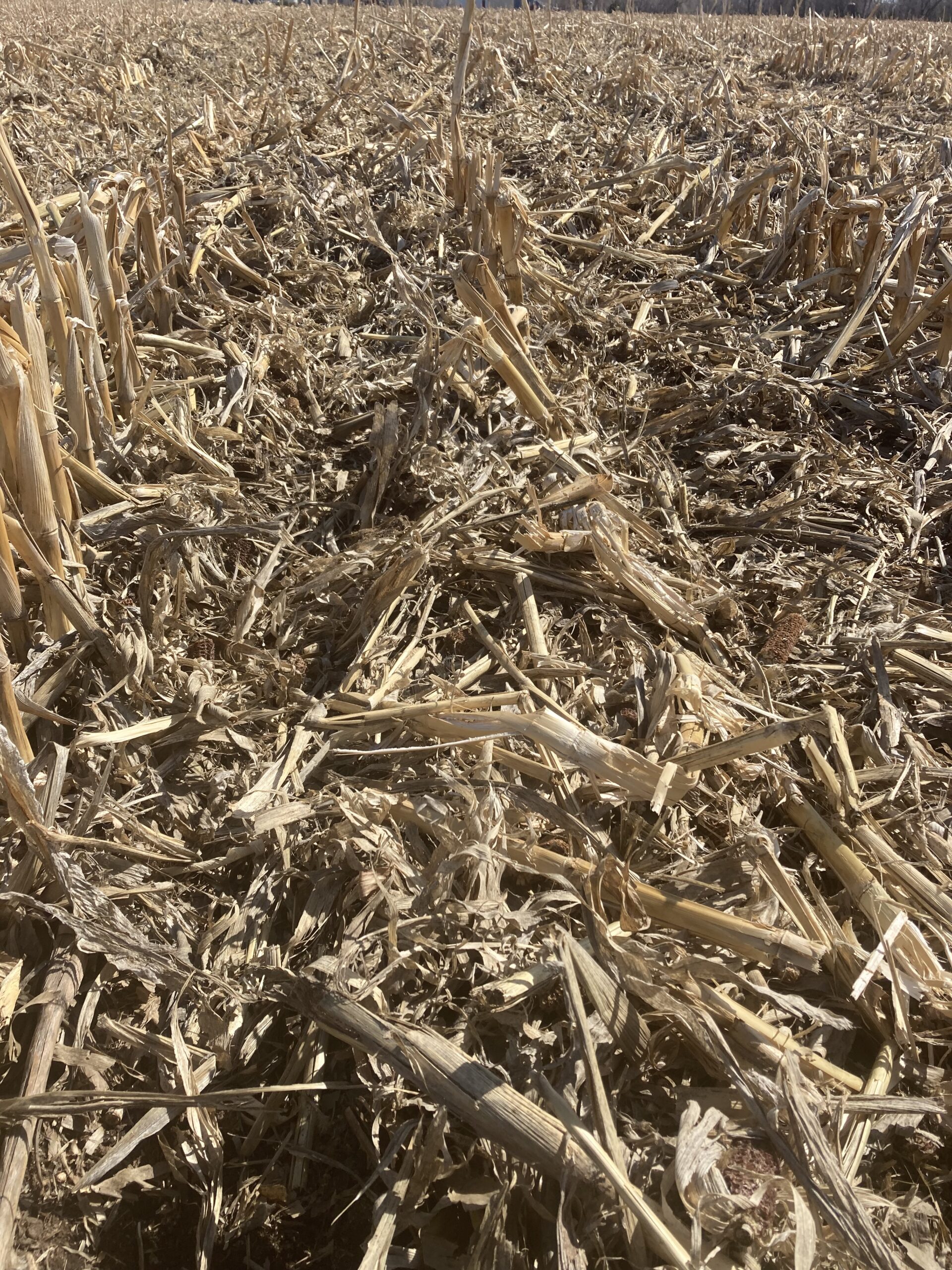
Two years of irrigated corn residue didn’t prove to be a challenge when Marvin Schumacher recently planted soybeans into this field. “Many who see it think it is impossible to plant into, but it actually works well with the right set-up,” Schumacher said. Courtesy photo.
Choosing a rotation
Producers thinking about adding diversity to their crop rotations will have to think carefully about the needs of their individual operations and resources available to them.
“You know, a lot of my rotation is focused on soil organic matter,” Schumacher said. “So, we’re trying to build that organic matter. You do that with the carbon, and so that’s why my rotations tend to be leaning pretty heavily towards the corn and the grasses as opposed to the broadleaves.” He said that he still uses broadleaf crops, but they appear less often in the rotations.
“The best rotation is kind of dependent upon your production system, what you have going on, what kind of your circumstances are,” Osborne said. “If you’re a producer who is wanting to look at lower fertilizer costs, those rotations where we have corn, soybeans, a small grain and a pea are very beneficial when you have those two legumes in there because they are providing more nitrogen. If you’re just wanting to get more root growth, more roots there all the time, greater soybean yields, the ones with the winter wheat and especially where you have oats in that rotation.”
The ability to either market or make use of each crop in the rotation will also affect producers’ decisions, Osborne said. She said that a corn, oats, winter wheat, and soybean rotation would be an easy rotation for many producers to adopt at first.
“If it’s a producer who has done just traditionally corn-soybeans, I would encourage them to include a small grain to begin with and kind of go from there,” Osborne said. “Don’t let one year discourage you, and don’t put it on the worst land and think that it’s going to improve it all of a sudden. You’re building the system, and you’re trying to get that system to work together. And so, it takes time to do that for the organisms to get those feedback loops and everything to get working together.”
For questions about the Alternative Rotation Experiment, contact Osborne at shannon.osborne@usda.gov or 605-693-5234. To learn more about soil health and benefits of biodiversity, visit www.sdsoilhealthcoalition.org.
Download a printer-friendly version of this article here.
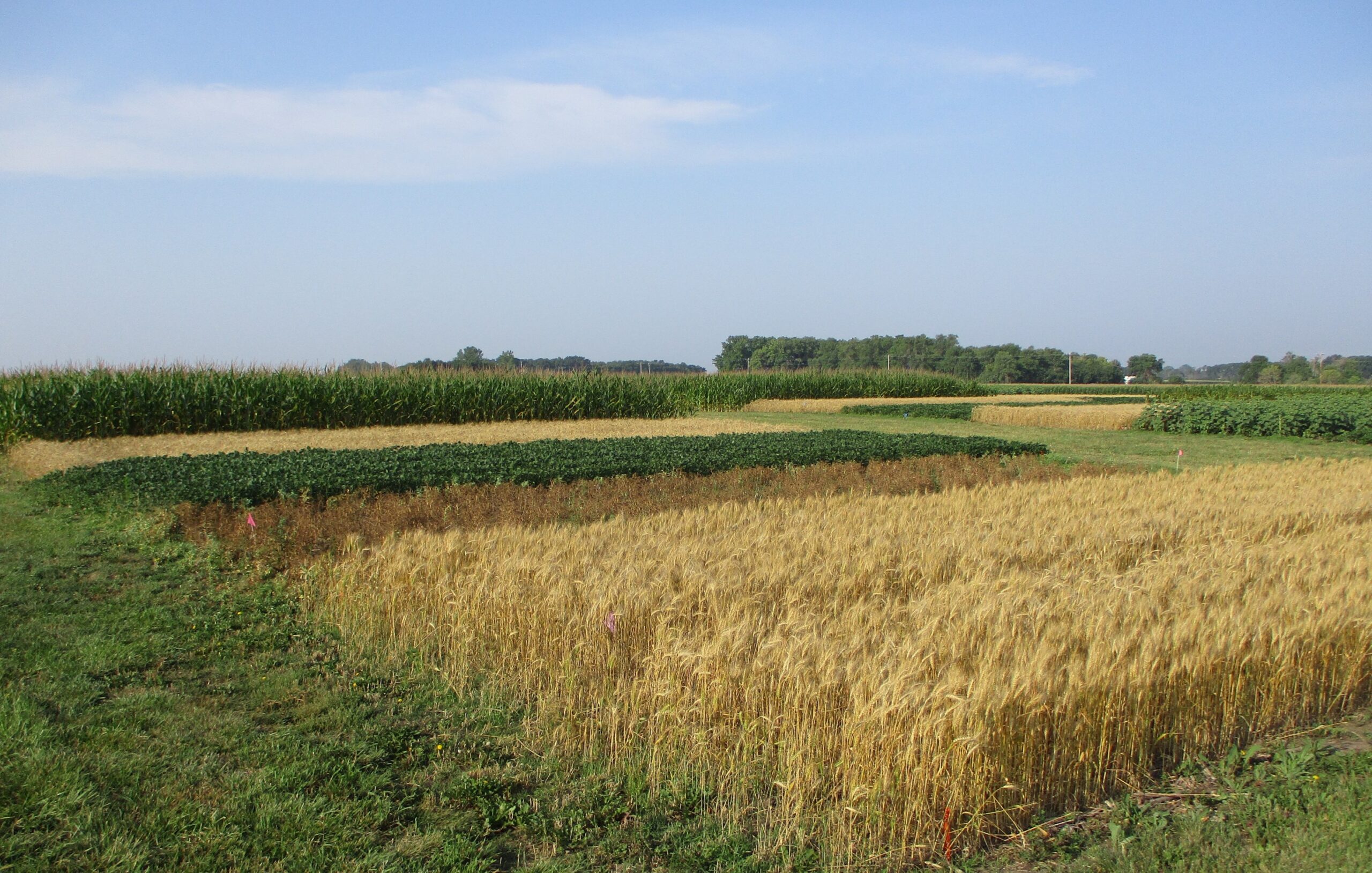
This is a field view of the USDA-ARS, North Central Research Laboratory, Brookings, SD, long-term Alternative Rotation Experiment established in the fall of 2000 to evaluate the impact of diversified crop rotations on improving crop yield, quality, and soil health. USDA-ARS graphic.
0 Comments